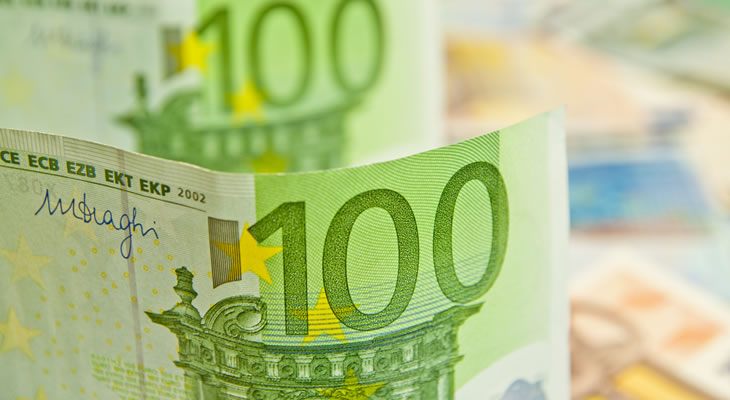The Euro’s gains against the US Dollar have been limited this week despite lower bets that the Federal Reserve could hike US interest rates a third time before the end of 2017. This is because EUR USD hit a 14-month-high of 1.1487 this week, meaning the pair faces notable psychological resistance. The pair trends slightly above the week’s opening level of 1.1400.
Euro (EUR) Supported by Data and ECB Speculation
A relatively weak US Dollar has been unable to push back a sturdy Euro this week, but the Euro’s gains have been limited as EUR USD faces psychological resistance near its best levels in over a year.
This week’s Eurozone data has been solid. Eurozone industrial production in May beat expectations in both monthly and yearly prints, while June’s German and French inflation results met projections. The Eurozone’s May trade surplus increased to €21.4b.
However, one of the main reasons investors have been hesitant to continue buying up the Euro has been the European Central Bank’s (ECB) mixed messages.
While the ECB’s latest meeting minutes indicated the bank did not plan on making any further extensions or expansions to its aggressive quantitative easing (QE) measures, many of the bank’s officials have maintained cautious stances.
Despite this caution, mutterings emerged from the Wall Street Journal on Thursday that the ECB could announce as soon as September that it will begin to withdraw its QE package next year.
Markets already largely expect some kind of major forward guidance from the ECB in September, but speculation has persisted that the QE program could be extended.
While the September policy decision is still quite a ways away, ECB President Mario Draghi may give some further hints in late August, according to the WSJ report.
July’s ECB policy meeting, which takes place next week, is unlikely to give investors the details they’re hoping for.
The Euro could weaken next week if the ECB disappoints, but any further signs that the ECB is indeed planning to wind down its QE program could improve the long-term Euro outlook.
US Dollar (USD) Strength Limited by Fed Uncertainty
The US Dollar has been unable to advance against the Euro this week despite the resistance the Euro faces.
Markets have become less confident that the Federal Reserve will be able to hike US interest rates for a third time before the end of 2017, due to slowing inflation.
US inflation fell short of expectations in recent prints, causing Fed Chairwoman Janet Yellen to note that inflation should be observed carefully in the coming months.
As a result, Friday afternoon’s US inflation report from June could impact long-term US Dollar exchange rate movement.
Analysts expect US inflation will slow from 1.9% to 1.7% year-on-year, and edge higher from -0.1% to 0.1% month-on-month.
If inflation is better than expected, bets of a 2017 Fed interest rate hike will increase and the US Dollar could push EUR USD down towards the end of the week.
However, poor inflation stats would worsen market concerns about the Federal Reserve outlook and could help EUR USD to reach its yearly high again.
Inflation and rate hikes aren’t the only concern for USD traders. The Fed has been unclear about when it intends to begin unwinding its massive balance sheet.
Speculation has also flared up about who the Fed Chair successor will be once Yellen’s term ends in January 2018. This has caused further long-term uncertainty in USD trade.
Mutterings have emerged that investment banker and Goldman Sachs alum Gary Cohn is US President Donald Trump’s current favourite to succeed Yellen as the Fed Chair next year.
EUR USD Interbank Rate
At the time of writing this article, the Euro US Dollar exchange rate trended in the region of 1.1411. The US Dollar to Euro exchange rate traded at around 0.8760.


Comments are closed.